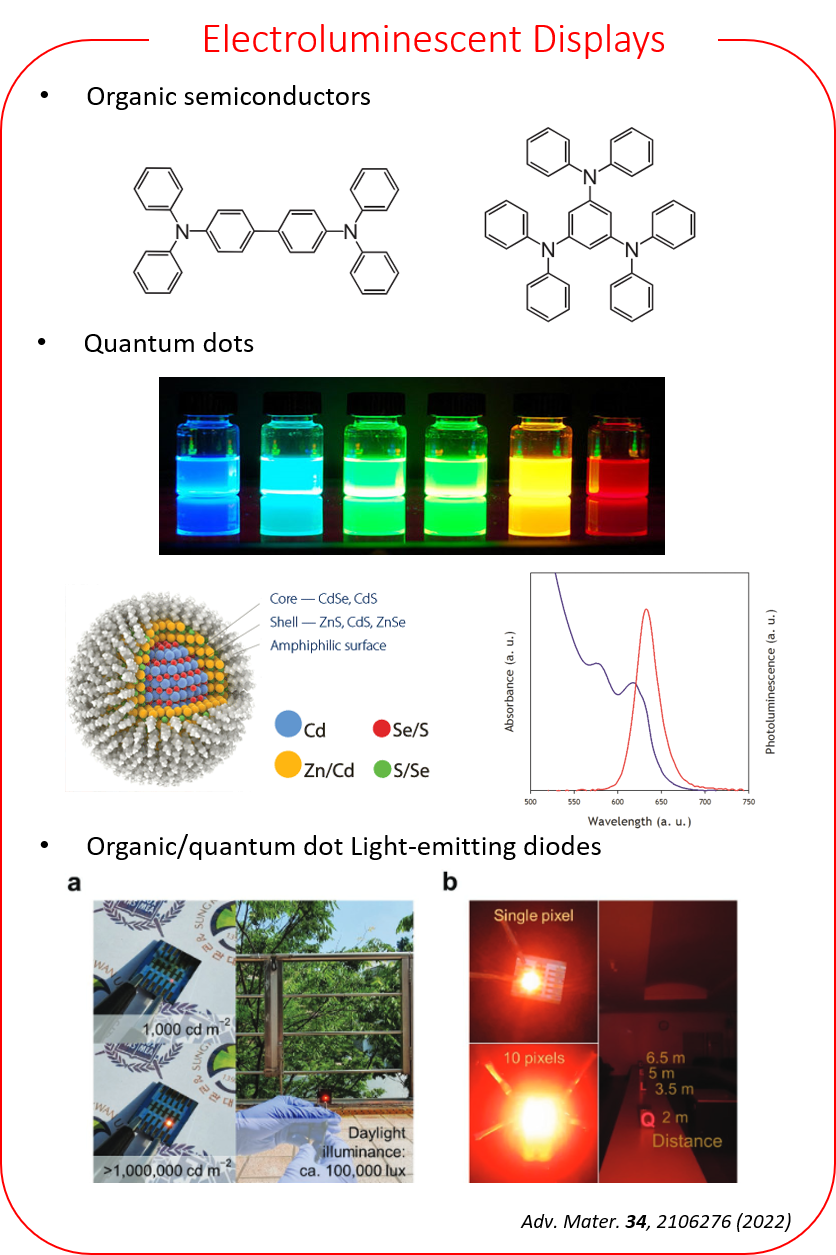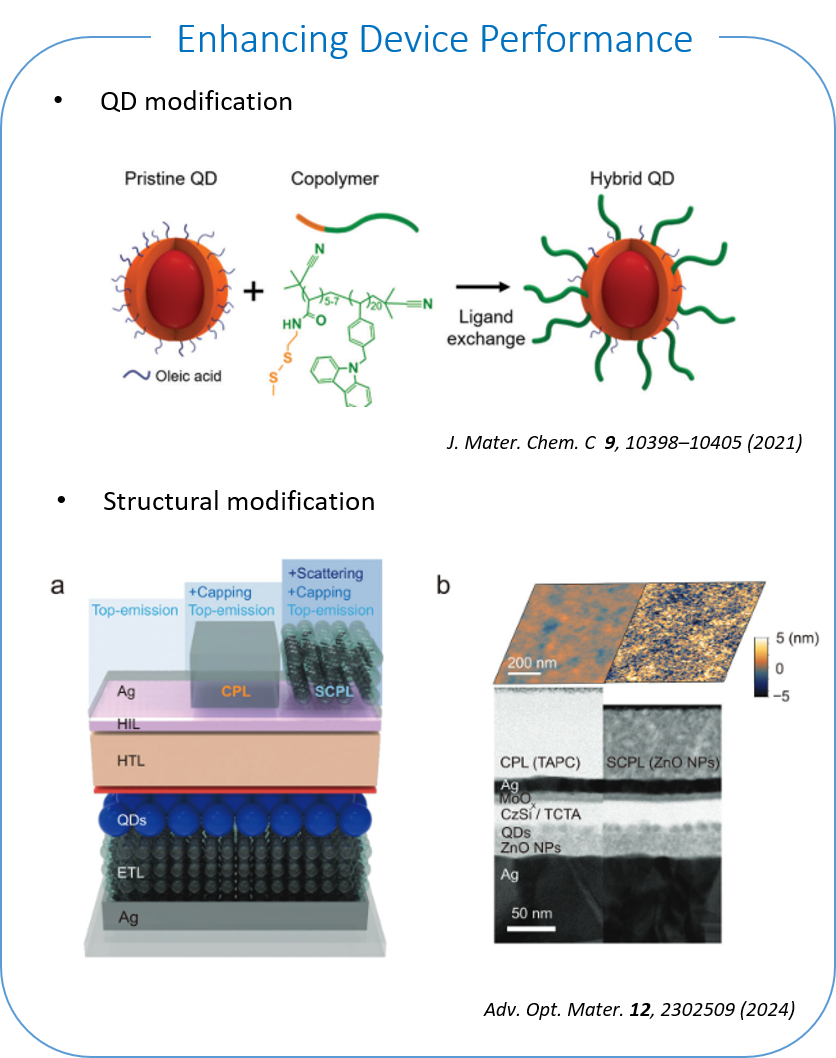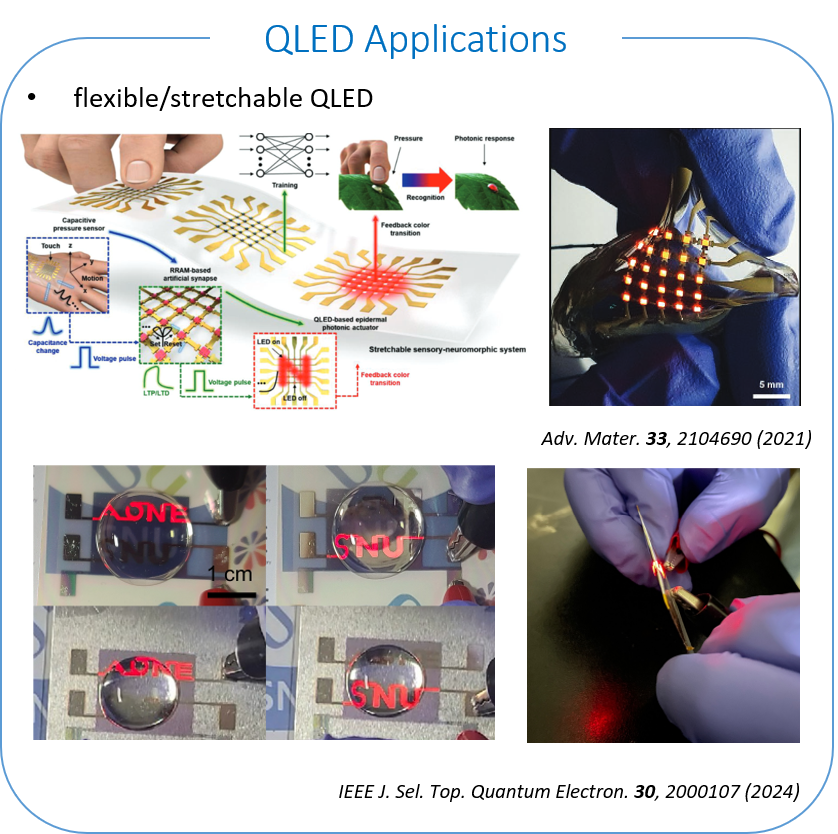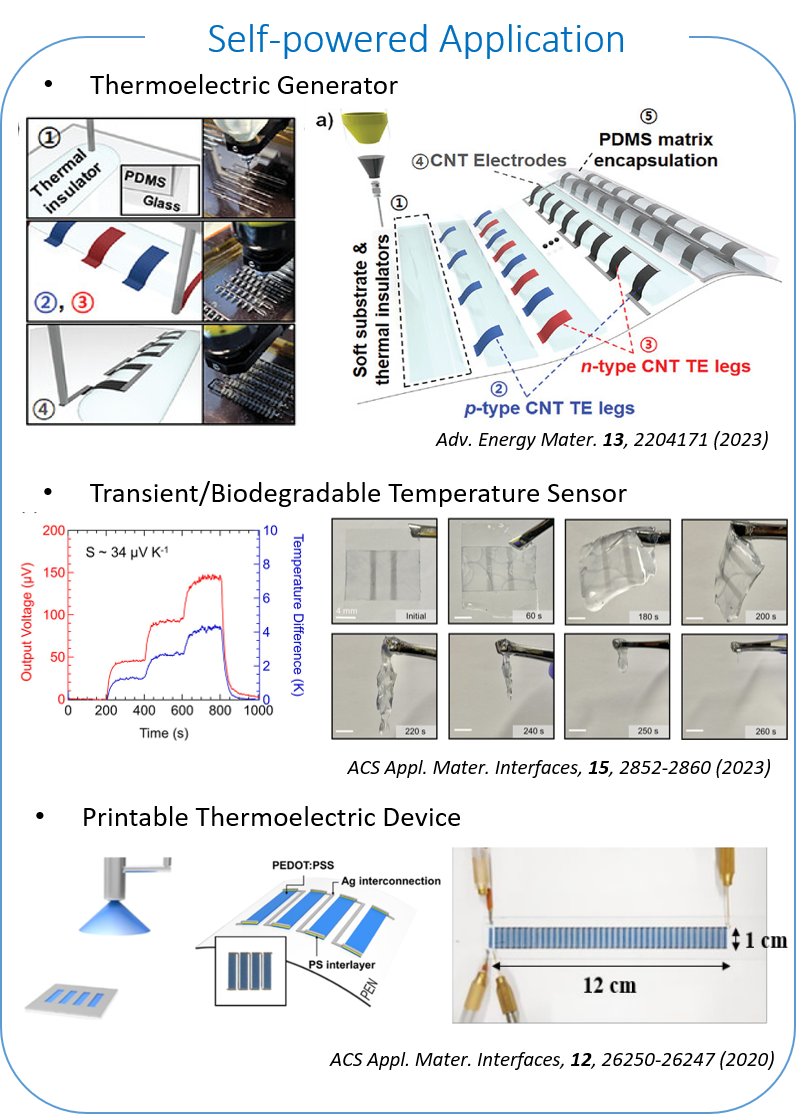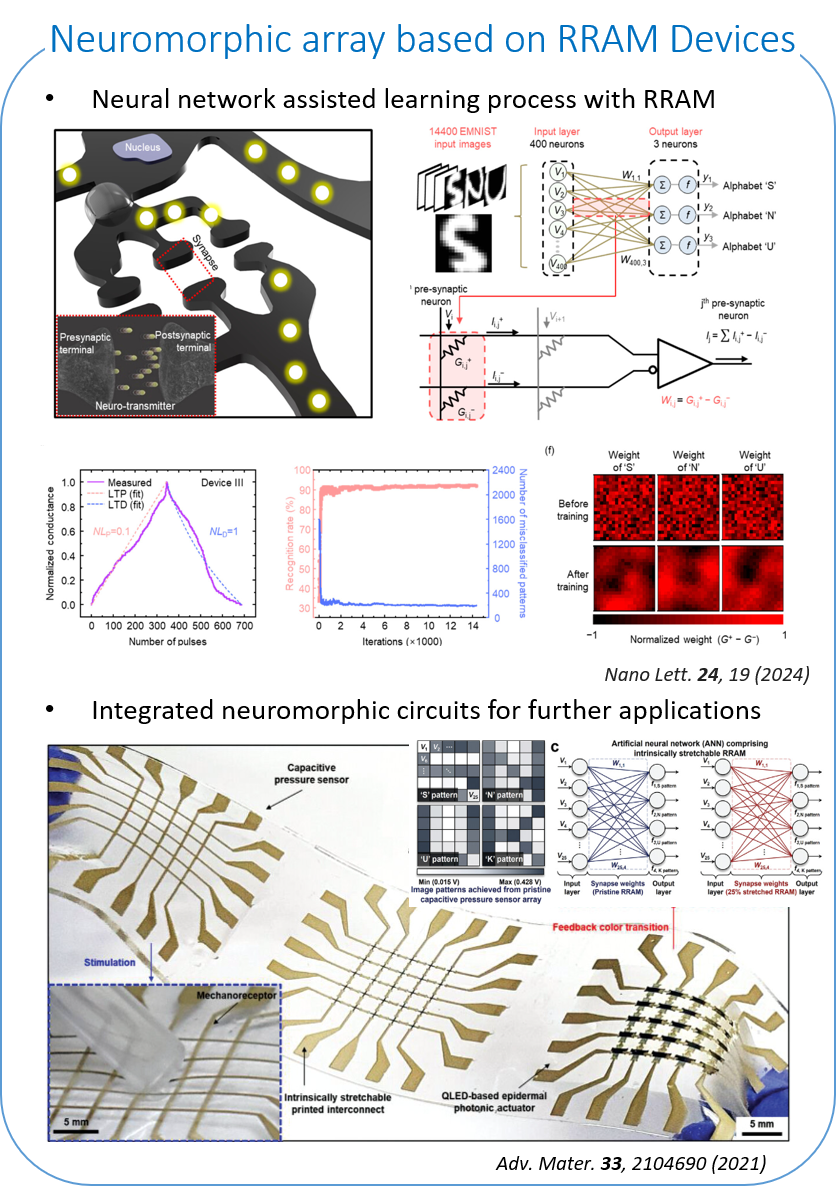OLED/QLED Device Design & Physics
Organic Light-Emitting Diode (OLED)
Organic light-emitting diode (OLED) is an LED using organic molecules (or polymers) as semiconducting materials. Now OLEDs are widely used as a main display device of cell phones, tablet PCs, and so on, owing to the merits of high brightness, high color purity, and the flexible form factor as well. We are designing the device structure of OLEDs for achieving effient, flexible and transparent displays.
Quantum Dot Light-Emitting Diode (QLED)
A quantum dot (QD) is a nano-sized (2-10 nm) semiconducting crystal. Because the physical size of the QD is generally smaller than the exciton Bohr radius, the excitons are confined in all three spatial dimensions, resulting in very unique and superior optical properties, such as wide absorption and narrow emission bandwidth, high photoluminescence quantum yield. Furthermore, the emission or absorption range can be easily controlled by changing the size of QDs during their synthesis. Owing to these great properties, QDs are considered as the most promising emitter for LEDs and display devices.
Quantum dot light-emitting diode (QLED) is an LED incorporating QDs in the emitting layer. A QLED can exhibit a narrow electroluminescence spectrum (FWHM<30 nm) with wide color gamut. Over time, the performance of QLEDs has gradually improved, exhibiting high external quantum efficeincy. QLEDs are considered as the most promising candidate for next-generation displays. Furthermore, QLEDs can be used even as the UV and IR light sources.
Thermoelectrics
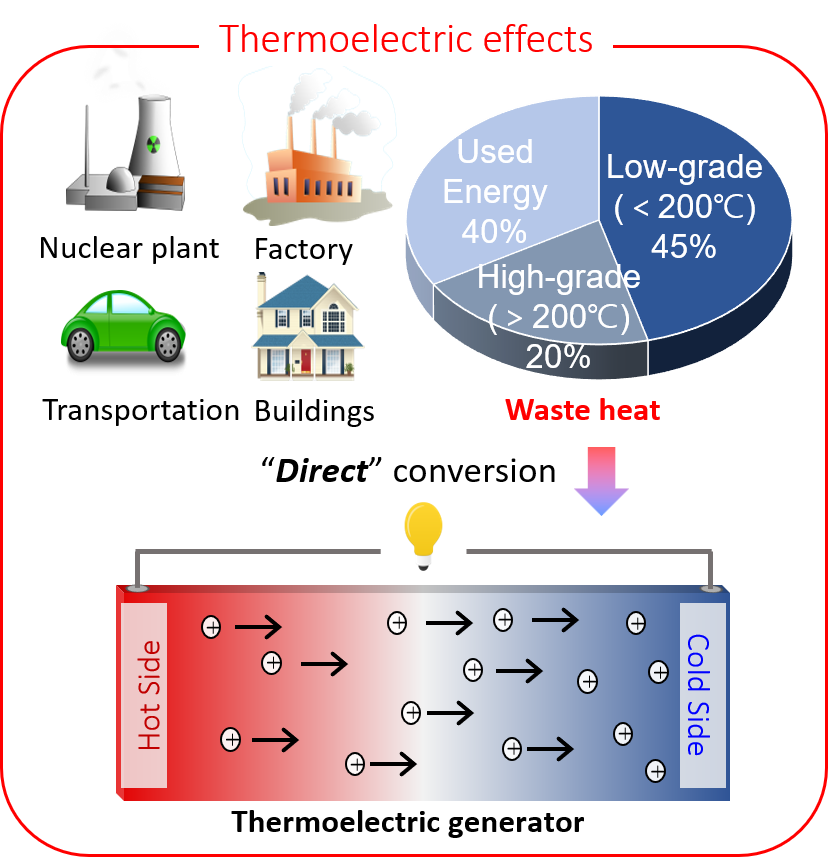
Organic thermoelectric devices
A thermoelectric (TE) device is a semiconductor device that change temperature differences to electric voltage and vice versa. The phenomena is called as the thermoelectric effect. The TE devices are used for electric power generation, cooling or heating.
Based on the thermoelectric effects, we strive to explore the i) fundamental electronic physics behind the next-generation semiconductors and develop ii) self-powered sensors &
thermoelectric generators that show high promise for prospective wearable electronic devices.
We are especially interested in achieving our mission using conjugated polymers and low-dimensional materials which have strong advantages over inorganic counterparts.
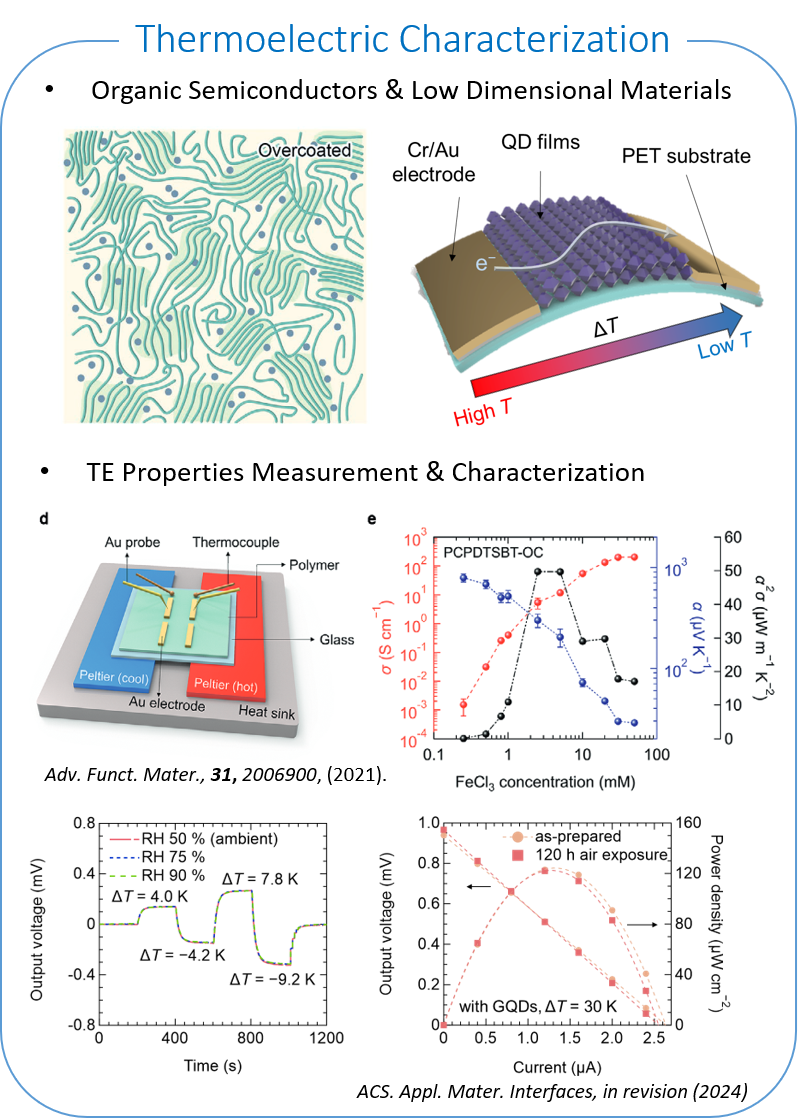
We do research on..
– Characterization of TE properties & understanding charge-transport of next-generation semi-conductors
– Development of novel doping strategies and ML guided optimization techniques for high TE performance
– Fabrication of printable, solution-processed self-powered application for efficient TE conversion
Neuromorphic device

Resistive Random Access Memory (RRAM)
Resistive random access memory (RRAM) is a nonvolatile memory operated by varying resistance of active layer. It is one of the representative hardware types for neuromorphic computing. The ability of changing resistance in RRAM can be used as different weight at neural network. Integrated RRAM array can be used as neuromorphic device which is a next-generation semiconductor device made by imitating the operation of human neurons and synapse. It can compute parallel deep neural network integrated with artificial intelligence system in the age of data explosion.
